


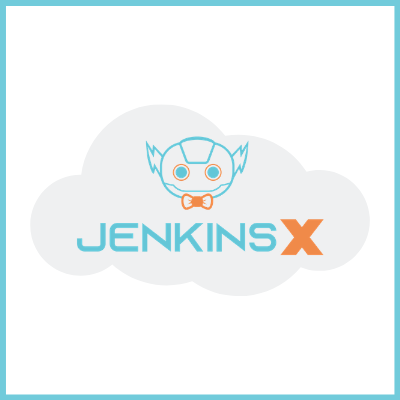
Hi Everyone,
My name is Oscar Medina, and I am thrilled to be part of this fantastic community. I have spent over 22 years in the technology industry, and have seen things come and go.
One thing that excites me these days (aside from the plethora of outdoor activities), is the paradigm shift I’ve seen throughout my career when it comes to systems architecture.
Microservices and container orchestration is not going away as other things have. This is why I am committed to spreading the word and helping educate folks on what the Continuous Delivery Foundation is all about.
Over the past 4.5 years or so, I have spent a lot of time in the open-source world. I am currently a Developer Advocate for the Jenkins X project, which is also now under the CD Foundation umbrella along with other projects such as Spinnaker, Jenkins, Tekton, and Jenkins X, of course.
I look forward to meeting you at different organized events, virtual or hopefully in person in the future.


My coding buddy, Ginger loves the outdoors too!
Cheers,
Oscar
Originally posted on the Jenkinx X blog by Neha Gupta

Neha Gupta is adding support for Kustomize in Jenkins X, to enable Kubernetes native configuration management, while participating in Outreachy from December 2019 to March 2020.
This blog might be helpful for beginners who are fear-stricken or I would say hesitant to ASK, to get lost in the new world while trying to understand any open source project, fear of asking questions that may sound stupid later on or are very obvious! First of all.. Relax!
NOTE : Beware! seeing too many organisations and projects will only confuse you, so start with only one or max 2 projects, try to deep-dive and focus on them.
After selecting the project :
Happy learning! 🙂
Originally posted on the Jenkins X blog by Neha Gupta

Neha Gupta is adding support for Kustomize in Jenkins X, to enable Kubernetes native configuration management, while participating in Outreachy from December 2019 to March 2020.
In my graduation class of fifty people we were three girls struggling to set up our space and comfort with the weird reactions we got from fellow students for trying to understand technology. When my professor asked us to make an autonomous drone. I couldn’t make one, I was shattered, until a friend from computer science batch helped me make one. He showed me some of the cool apps he made, that sparked an interest, and I started building apps, realising that computer science is beyond just coding, it’s more about solving real life problems.
I’ve transitioned from mobile to web apps, server-end development, robotics, cloud architecting, and also cofounding a startup. I’ve been focusing on using AI to make smarter apps, and help students think beyond, and see the bigger picture. I’m hoping to start an accelerator, regulating the perception about technology, focusing especially on hidden potential behind fear-stricken girls.
When I heard about Outreachy program and I liked how women and other minority communities are being supported and motivated. It felt something similar to what I’m trying to do with the young girls around me (breaking the stereotypical phenomenon of “girls can’t code”). I felt participating in Outreachy will not only boost my but other girls motivation too! and it’ll also definitely help me grow technologically, socially and mentally.
To me it feels really cool to work with a team remotely. The interactions, networking and feel is completely different, especially when it’s open-source (Like ..I get anxious before asking questions on public channels, if the question is too logical and stupid). Also, I’m a fan of open-source contributions, so… (here was the chance).
Another reason was to interact with the minority community (people who are facing similar issues in STEM like me) and share some instances with them, be on the same page, enlighten and get enlightened (all that networking sounds fun..). I am also excited about the trip. Why Jenkins-X?
The Cloud Storage backed Helm repository idea seemed interesting, so I started exploring it. The project was also quite different from other listed (maybe because it was meant for me 😀 ), I only contributed to it and focused on it.
Also the community was very welcoming and communications with my mentor were good. He helped me making contributions to the project, he guided me to some good first issues, helped me correct my PR’s. Jenkins-X looked as an interesting open-source project so I’m glad I tried to be a part of it and got selected.
If you are someone who has just started open source contributions and are fear stricken on how is it gonna work? These all things seems so confusing and you’re overwhelmed.
Don’t worry! ..
I was too! Every one is.. and this is just step — 1. Anyone who’s going to pick up a new project which is production ready and thousands/millions of people are using it, is going to be confused! This is normal and natural (the initial learning curve), but once you overcome it. Things become so normal and understanding, people are here to help you out.
If you think you can’t make it because of the competition, how does matter? If not this time, next time (I myself got selected after 3 years of trying), you anyway has to start one day, so let it be today. But the learnings you take away from the process, are insanely valuable and every-time it’s gonna become easier.. Feel free to reach me if you are facing any issues regarding starting with open-source contributions or if you have question saying — shall I apply to Outreachy this time?
Good Luck! 🙂
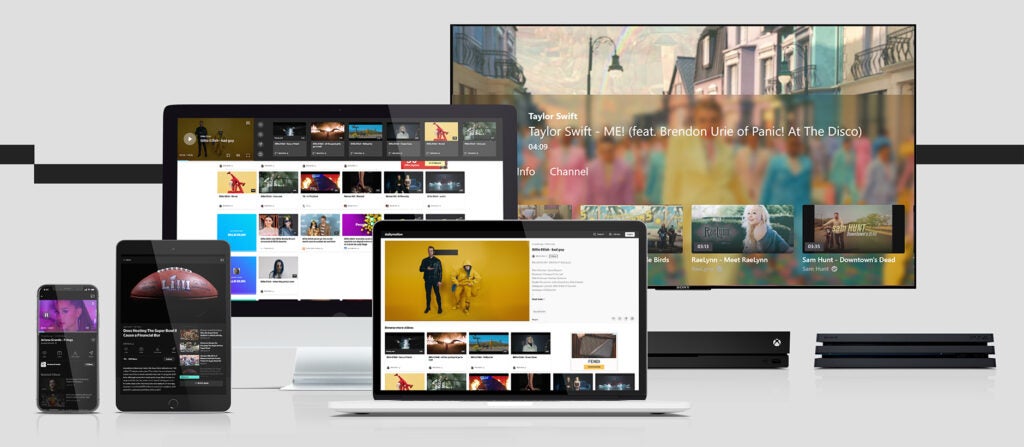
From Dailymotion, a French video-sharing technology platform with over 300 million unique monthly users
At Dailymotion, we are hosting and delivering premium video content to users all around the world. We are building a large variety of software to power this service, from our player or website to our GraphQL API or ad-tech platform. Continuous Delivery is a central practice in our organization, allowing us to push new features quickly and in an iterative way.
We are early adopters of Kubernetes: we built our own hybrid platform, hosted both on-premise and on the cloud. And we heavily rely on Jenkins to power our “release platform”, which is responsible for building, testing, packaging and deploying all our software. Because we have hundreds of repositories, we are using Jenkins Shared Libraries to keep our pipeline files as small as possible. It is an important feature for us, ensuring both a low maintenance cost and a homogeneous experience for all developers – even though they are working on projects using different technology stacks. We even built Gazr, a convention for writing Makefiles with standard targets, which is the foundation for our Jenkins Pipelines.
In 2018, we migrated our ad-tech product to Kubernetes and took the opportunity to set up a Jenkins instance in our new cluster – or better yet move to a “cloud-native” alternative. Jenkins X was released just a few months before, and it seemed like a perfect match for us:
While adopting Jenkins X we discovered that it is first a set of good practices derived from the best performing teams, and then a set of tools to implement these practices. If you try to adopt the tools without understanding the practices, you risk fighting against the tool because it won’t fit your practices. So you should start with the practices. Jenkins X is built on top of the practices described in the Accelerate book, such as micro-services and loosely-coupled architecture, trunk-based development, feature flags, backward compatibility, continuous integration, frequent and automated releases, continuous delivery, Gitops, … Understanding these practices and their benefits is the first step. After that, you will see the limitations of your current workflow and tools. This is when you can introduce Jenkins X, its workflow and set of tools.
We’ve been using Jenkins X since the beginning of 2019 to handle all the build and delivery of our ad-tech platform, with great benefits. The main one being the improved velocity: we used to release and deploy every two weeks, at the end of each sprint. Following the adoption of Jenkins X and its set of practices, we’re now releasing between 10 and 15 times per day and deploying to production between 5 and 10 times per day. According to the State of DevOps Report for 2019, our ad-tech team jumped from the medium performers’ group to somewhere between the high and elite performers’ groups.
But these benefits did not come for free. Adopting Jenkins X early meant that we had to customize it to bypass its initial limitations, such as the ability to deploy to multiple clusters. We’ve detailed our work in a recent blog post, and we received the “Most Innovative Jenkins X Implementation” Jenkins Community Award in 2019 for it. It’s important to note that most of the issues we found have been fixed or are being fixed. The Jenkins X team has been listening to the community feedback and is really focused on improving their product. The new Jenkins X Labs is a good example.
As our usage of Jenkins X grows, we’re hitting more and more the limits of the single Jenkins instance deployed as part of Jenkins X. In a platform where every component has been developed with a cloud-native mindset, Jenkins is the only one that has been forced into an environment for which it was not built. It is still a single point of failure, with a much higher maintenance cost than the other components – mainly due to the various plugins.
In 2019, the Jenkins X team started to replace Jenkins with a combination of Prow and Tekton. Prow (or Lighthouse) is the component which handles the incoming webhook events from GitHub, and what Jenkins X calls the “ChatOps”: all the interactions between GitHub and the CI/CD platform. Tekton is a pipeline execution engine. It is a cloud-native project built on top of Kubernetes, fully leveraging the API and capabilities of this platform. No single point of failure, no plugins compatibility nightmare – yet.
Since the beginning of 2020, we’ve started an internal project to upgrade our Jenkins X setup – by introducing Prow and Tekton. We saw immediate benefits:
While replacing the pipeline engine of Jenkins X might seem like an implementation detail, in fact, it has a big impact on the developers. Everybody is used to see the Jenkins UI as the CI/CD UI – the main entry point, the way to manually restart pipelines executions, to access logs and test results. Sure, there is a new UI and a real API with an awesome CLI, but the new UI is not finished yet, and some people still prefer to use web browsers and terminals. Leaving the Jenkins Plugins ecosystem is also a difficult decision because some projects heavily rely on a few plugins. And finally, with the introduction of Prow (Lighthouse) the Github workflow is a bit different, with Pull Requests merges being done automatically, instead of people manually merging when all the reviews and automated checks are green.
So if 2019 was the year of Jenkins X at Dailymotion, 2020 will definitely be the year of Tekton: our main release platform – used by almost all our projects except the ad-tech ones – is still powered by Jenkins, and we feel more and more its limitations in a Kubernetes world. This is why we plan to replace all our Jenkins instances with Tekton, which was truly built for Kubernetes and will enable us to scale our Continuous Delivery practices.
Originally posted in the Jenkins X blog by Rob Davies
The Jenkins X project started the beginning of 2019 by celebrating its first birthday on the 14th January, a big event for any open source project, and we have just celebrated our 2nd – hooray!

image by Ashley McNamara, creative commons license
Jenkins X has evolved from a vision of how CI/CD could be reimagined in a cloud native world, to a fast-moving, innovative, rapidly maturing open source project.
Jenkins X was created to help developers ship code fast on Kubernetes. From the start, Jenkins X has focused on improving the developer experience. Using one command line tool, developers can create a Kubernetes cluster, deploy a pipeline, create an app, create a GitHub repository, push the app to the GitHub repository, open a Pull Request, build a container, run that container in Kubernetes, merge to production. To do this, Jenkins X automates the installation and configuration of a whole bunch of best in breed open source tools, and automates the generation of all the pipelines. Jenkins X also automates the promotion of an application through testing, staging, and production environments, enabling lots of feedback on proposed changes. For example, Jenkins X preview environments allow for fast and early feedback as developers can review actual functionality in an automatically provisioned environment. We’ve found that preview environments, created automatically inside the pipelines created by Jenkins X, are very popular with developers, as they can view changes before they are merged to master.
Jenkins X is opinionated, yet easily extensible. Built to enable DevOps best practices, Jenkins X is designed to the deployment of large numbers of distributed microservices in a repeatable and manageable fashion, across multiple teams. Jenkins X facilitates proven best practices like trunk based development and GitOps. To get you up and running quickly, Jenkins X comes with lots of example quickstarts.
In the second half of 2018, Jenkins X embarked on a journey to provide a Serverless Jenkins and run a pipeline engine only when required. That pipeline engine was based on the knative build-pipeline project which evolved into Tekton with much help and love from both the Jenkins and Jenkins X communities. The Jenkins X project completed its initial integration with Tekton in February 2019. Tekton is a powerful and flexible kubernetes-native open source framework for creating CI/CD pipelines, managing artifacts and progressive deployments.

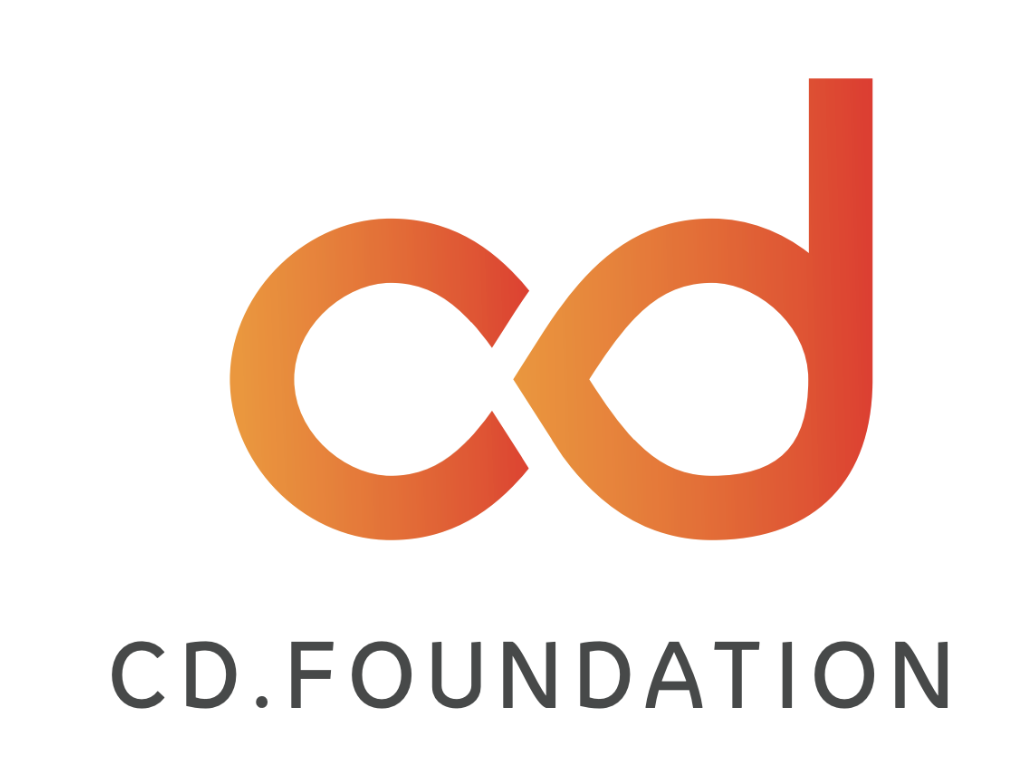
Jenkins X joined the Continuous Delivery Foundation (CDF) as a founding project alongside Jenkins, Spinnaker, and Tekton. Joining a vendor-neutral foundation, focused on Continuous Delivery, made a lot of sense to the Jenkins X community. There had already been a high level of collaboration with the Jenkins and Tekton communities, and there have been some very interesting and fruitful (in terms of ideas) discussions about how to work better with the Spinnaker communities also.
When Jenkins X embarked on its serverless jenkins journey, it chose to use Prow, an event handler for GitHub events and ChatOps. Prow is used by the Kubernetes project for building all of its repos and includes a powerful webhook event handler. Prow is well proven, but heavily tied to GitHub, and not easily extendable to other SCM providers. At the end of June 2019, work commenced on a lightweight, extensible alternative to Prow, called Lighthouse. Lighthouse supports the same plugins as Prow (so you can still ask via ChatOps for cats and dogs) and the same config – making migration between Prow and Lighthouse extremely easy.
We were very busy in June – a frantic burst of activity before summer vacations! One common problem Jenkins X users were facing was the installation of Jenkins X on different Kubernetes clusters. Installing services, ensuring DNS and secrets are correct, and done in the right order is completely different from vendor to vendor, and sometimes cluster to cluster. We realised that to simplify the install, we really needed a pipeline, and whilst this may sound a little like the plot to a film, running a Jenkins X pipeline to install jx really is the best option. The jx boot command interprets the boot pipeline using your local jx binary. The jx boot command can also be used for updating your cluster.
As part of the move to the CDF the Jenkins X project took the opportunity to redesign its logo. An automaton represents the ability of Jenkins X to provide automated CI/CD on Kubernetes and more!
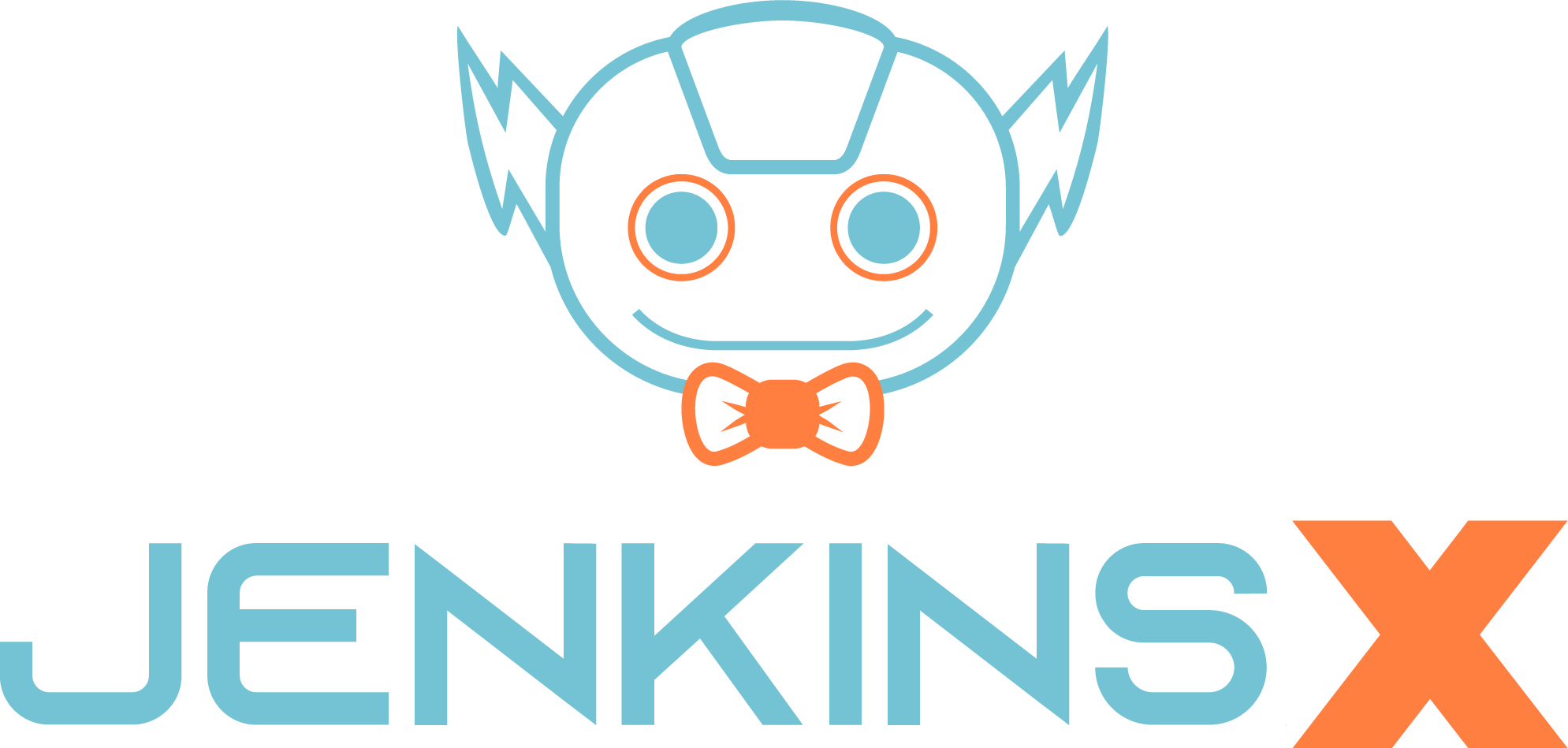
The Jenkins X project has been fast paced with lots of different components and moving parts. This fast pace unfortunately led to some instability and a growth of serious issues that risked undermining all the great work there had been on Jenkins X. There has been a concerted effort by the community to increase stability and reduce outstanding issues – the graph below shows the trend over the last year, with a notable downward trend in the number of issues being created in the last 6 months.

CloudBees also aided this effort by introducing the CloudBees Jenkins X Distribution with increased testing around stabilized configurations and deployments and regular releases every month.
The Jenkins X Bootstrap Steering Committee is tasked with organising the transition to an elected steering committee, as well as determining what responsibilities the steering committee will have in guiding the Jenkins X project.

Neha Gupta is adding support for Kustomize in Jenkins X, to enable Kubernetes native configuration management, while participating in Outreachy from December 2019 to March 2020. We welcome Neha’s work on Jenkins X and look forward to building on our culture of continuous mentoring!
The easiest way to try out Jenkins X is undoubtedly through CloudBees CI/CD powered by Jenkins X which provides Jenkins X through the convenience and ease of use of SaaS. No cluster setup, no Jenkins X install, that is all done for you! Currently, CloudBees CI/CD powered by Jenkins X is available for preview. Sign up here to try out the new Jenkins X Saas!
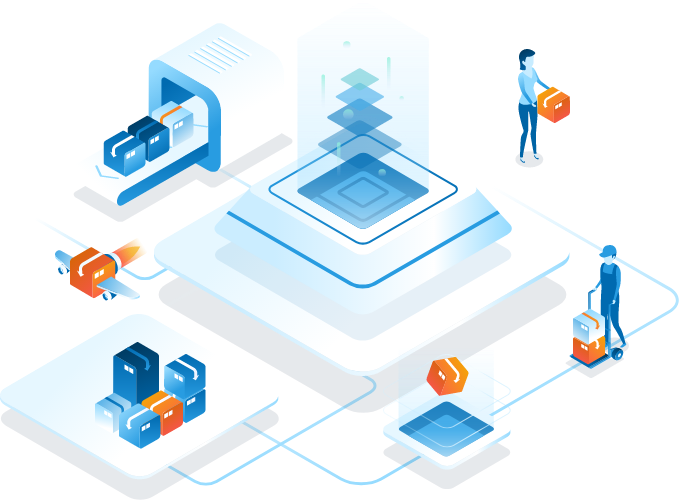
The Jenkins X project is going to be encouraging the community to get involved with more innovation. There are a lot of great ideas to extend the continuous story with integrated progressive delivery (A/B testing, Canary and Blue/Green deployments) and Continuous Verification, alongside more platforms support. We are expecting lots of awesome new features in the CloudBees UI for Jenkins X too.
Expect lots more exciting new announcements from Jenkins X in 2020!
Outreachy is a program for open source internships that specifically targets people in demographics that are underrepresented in tech. Since 2010 Outreachy has had over 400 participants making contributions to open source projects. Outreachy is one of the most effective programs for improving the diversity of open source communities. For those familiar with Google Summer of Code, Outreachy follows a very similar format.
The Continuous Delivery Foundation is a neutral home for the next generation of continuous delivery collaboration. We know that the greater number of diverse voices we have collaborating, the more effective we are as a community. Which is why we are thrilled to be participating in Outreachy for this upcoming round.
Three of the CD Foundation projects: Jenkins, Jenkins X and Tekton are offering Outreachy internship projects. The Jenkins project has participated in the previous 2 rounds of Outreachy, having a total of 4 Outreachy interns working with the community on the Jenkins Audit Log Plugin. Jenkins mentor Matt Sicker shares in this post “Outreachy has helped open my eyes to the struggles that developers from around the world are dealing with which can be improved upon to help expand our communities. For example, many countries do not have reliable internet or electricity, so the use of synchronous videoconferencing and other heavyweight, synchronous processes common to more corporate-style development are inadequate in this international context.”
In that way Outreachy is also beneficial to the mentors participating. The actual tech contributions are a bonus side effect. Jenkins participates in the program with no expectation that the interns remain part of the community – but takes a wider, long term view that this generally improves open source and tech communities as a whole. Tracy Miranda, Outreachy coordinator for the Jenkins project says “As of this year I know of 2 Outreachy alumni (non-Jenkins projects) who were hired by my employer and both mention the Outreachy program as an important stepping stone in their career journeys.”
Here are the details of this round’s CD Foundation projects which we are looking for interns for. Please help us spread the word.
Kara de la Marck, the Jenkins X Outreachy coordinator can personally speak to the benefits of the program: “Outreachy is a fantastic mentoring program that helps to onboard new contributors to a project and to open source more generally. Many participants go on to become long term contributors to open source. As an alumna, I have carried forward a deep appreciation of open source as an enabler of global collaboration, technological innovation, and community. I’m incredibly happy to welcome Outreachy participants to Jenkins X.”
Please help us spread the word, and we look forward to working with Outreachy interns and welcoming them into our community.
Jenkins Community Celebrates 15 years of Continuous Delivery Automation and Innovation at DevOps World | Jenkins World
DEVOPS WORLD | JENKINS WORLD, SAN FRANCISCO – AUGUST 14, 2019 – The Jenkins project, comprised of the community of practitioners using Jenkins®, today celebrated its 15th birthday at DevOps World | Jenkins World with a recap of milestones showcasing the community’s growth and the project’s defining impact on the global software industry.
Jenkins is the world’s leading open source automation server, used by companies large and small to implement continuous integration (CI) and continuous delivery (CD). Originally developed in 2004 and called Hudson, Jenkins’ impact has grown consistently over the years to the point where experts regularly describe Jenkins as the de facto tool for CI/CD.
So far this year, the Jenkins project has been a key driver in the formation of the Continuous Delivery Foundation, has continued to experience strong uptake in the use of Jenkins and will recognize key contributors to the Jenkins project around the globe during Thursday’s keynote session at DevOps World | Jenkins World.
In establishing the Continuous Delivery Foundation, the Jenkins community worked with The Linux Foundation, CloudBees, Google and Netflix to create a new foundation for the diverse CI/CD space. In addition to Jenkins, the Continuous Delivery Foundation was established with several other CI/CD open source projects, including Jenkins X, Spinnaker and Tekton. It serves as a vehicle to develop, nurture and promote open source projects, best practices and industry specifications related to continuous delivery.
The Continuous Delivery Foundation fosters vendor-neutral collaboration between the industry’s top developers, end users and vendors to further CI/CD best practices and industry specifications. Its mission is to grow and sustain projects that are part of the broad and growing continuous delivery ecosystem.
“This has been a great year for Jenkins, the Continuous Delivery Foundation and open source collaboration as a whole,” said Chris Aniszczyk, vice president at the Linux Foundation. “We all share a common mission – to support community-based development of projects that advance the state of software delivery. The Jenkins project has been squarely behind this effort from day one and today the community is stronger than ever.”
Also playing a key role in Jenkins’ transition to the CDF was CloudBees’ Tracy Miranda. Miranda took on the dual roles of CloudBees director of open source community and member of the governing board of the CDF. “CD is becoming a differentiator for organizations in every industry, yet adoption remains challenging. It’s an industry-wide problem that needs an industry-wide solution. From the CloudBees perspective, we see it as critical to have a neutral foundation where all agents of change can collaborate and contribute openly,” said Miranda. “Looking ahead to the next 15 years, we need to solve the complexity of CD adoption. With the CDF, we are well-equipped to do this in open source – building on top of all that we have learned in the Jenkins community over the years.”
During the period from July 1, 2018, through June 30, 2019, the Jenkins project achieved these milestones:
“Over the past 15 years, the Jenkins project has revolutionized the way software is built and delivered,” said Jenkins creator Kohsuke Kawaguchi, who also serves as chief scientist at CloudBees. “We have touched every industry and made a difference to every software team in the world.”
Additional Resources
1The Jenkins community tracks statistics from active Jenkins installations that transmit usage information back to the project. The numbers do not represent a majority of Jenkins installations, only those who choose to report. Therefore, the numbers are conservative.
About the Continuous Delivery Foundation
Continuous delivery (CD) is a software engineering approach in which teams produce software in short cycles, ensuring that the software can be reliably released at any time. The Continuous Delivery Foundation (CDF) is a Linux Foundation initiative that serves as the vendor-neutral home for many of the fastest-growing projects, including Jenkins, Jenkins X, Spinnaker, and Tekton. The CDF fosters collaboration between the industry’s top developers, end users and vendors to further continuous delivery best practices. For more information about the CDF, please visit https://cd.foundation.
Every year before the DevOps World | Jenkins World conference, Jenkins contributors gather for a contributor summit. Earlier this year, the CD Foundation became the new home for Jenkins as well as Jenkins X, Tekton and Spinnaker projects. CD Foundation serves as the new home for many of the fastest-growing projects for continuous delivery as well as a neutral home for collaboration in the CI/CD space. In that spirit of collaboration, this year’s contributor summit is being expanded to be a CDF Contributor Summit.
CDF Contributor Summit will be held on Monday August 12, 2019 in San Francisco, USA just before DevOps World | Jenkins World. It is a free event open to contributors of the open source projects. So far we will have community members from the Jenkins, Jenkins X and Tekton projects attending the summit.
The summit brings together community members to learn, meet and help shape the future of the projects. In the CDF community we value all types and sizes of contributions and love to welcome new participants who want to contribute to one or more projects.
The morning portion of the summit will consist of presentations by core committers of the projects. Presentations will highlight what each effort is about and what community members can do to help. We will cover a range of topics from technical aspects to community topics.
In the afternoon we will break into Birds of a Feather table for in-depth discussion and collaboration on different topics of interest. Bring your laptop, come prepared with questions and ideas, and be ready to meet and get coding with other contributors.
To join the summit, please sign up with the main project you contribute to or are interested in contributing to:
Jenkins: https://www.meetup.com/jenkinsmeetup/events/262686097/
Jenkins X: https://www.eventbrite.com/e/jenkins-x-contributor-summit-2019-san-francisco-tickets-65105473223
Tekton: https://www.eventbrite.com/e/tekton-contributor-summit-2019-san-francisco-tickets-64992545453